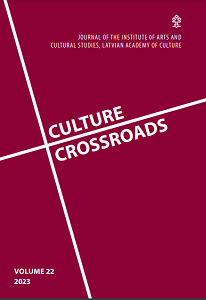TOWARDS A METHODOLOGY FOR INTERPRETING VISUAL IMAGES AS CYBERNETIC SYSTEM: LACAN AND DELEUZE
TOWARDS A METHODOLOGY FOR INTERPRETING VISUAL IMAGES AS CYBERNETIC SYSTEM: LACAN AND DELEUZE
Author(s): Cecilia InkolSubject(s): Fine Arts / Performing Arts, Visual Arts, Aesthetics, Psychoanalysis, Sociology of Art
Published by: Latvijas Kultūras akadēmija
Keywords: cybernetics; art-based research; visual language;
Summary/Abstract: This exposition endeavors to outline a theoretical framework for a methodology to interpret visual images that draws on cybernetics, semiotics, psychoanalysis and philosophical ideas. Using images, aesthetics and artistic practices as a means of generating new understanding requires translating, deciphering and interpreting those artistic products and/or processes. How can one decipher the system of visual language that underlies artistic productions? I suggest that cybernetics is requisite for such an endeavor. Cybernetic theory is the science of relations within a system, taking as its problematic the relation between a system and its productions or output; in some instances, it studies how the productions of a system influence the system itself. This exposition endeavors to articulate aesthetics or artistic works in terms of a visual language and as a cybernetic enterprise in the context of art-based research by drawing on the ideas of Lacan and Deleuze. For Lacan, aesthetics exists as a primary mode of discourse for the articulations of the unconscious, as evidenced in images in dreams, art and fantasy. Lacan is renowned for his dictum that the unconscious and its productions are structured like a language, but the kind of structure of meaning at work in the unconscious is less related to the structural grammar of a natural language than the syntax of mathematics and cybernetics. Drawing on Lacanian dream analysis, I evince how such an approach could be applied to aesthetic phenomena. Deleuze presents a semiotic theory, a theory of signs which evinces the generation of novel meaning in the unconscious; it can be said to be cybernetic in the way that it exists in a state of continual evolution, the output produced by the system engendering transformation in the system itself. Deleuze offers a framework for how the work of art or aesthetic phenomenon can be translated into new knowledge through the process of entrainment with signs.
Journal: Culture Crossroads
- Issue Year: 22/2023
- Issue No: 1
- Page Range: 46-56
- Page Count: 11
- Language: English

